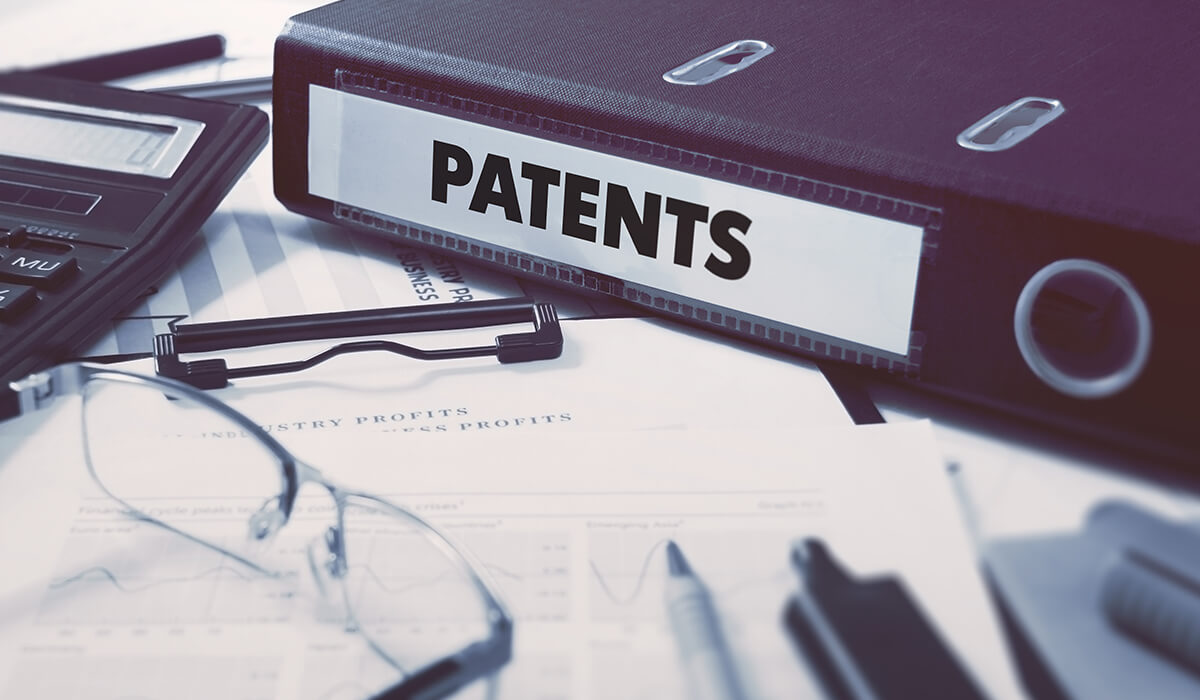1 Intro
Diamonds are forever. Unfortunately, patents are not. This is the sad truth that confronts investors, CEOs and patent managers whose businesses rely heavily on patent protected products or processes. It is well-known in the pharma world that the expiry of patent protection (sometimes extended by e.g. Supplementary Protection Certificates) opens up for generic drug manufacturers to market copies or biosimilars of the original drug, giving rise to a massive erosion in the sales of the original drug. This is often referred to as the “patent cliff” and the phenomenon is also found outside the pharma world, typically in relation to products with long product life cycles such as e.g. essential biotech tools (e.g. the PCR technology) or important food ingredients (e.g. aspartame/Nutrasweet®).
For a detailed overview of each phase in the patent process, refer to our comprehensive guide on the patent life cycle.
”Patent life cycle management” is the discipline of securing continuous patent protection around a product or product line despite patent expiry. This article discusses selected key aspects of patent life cycle management. We will focus on two important groups of activities:
– Maximizing the barrier effect of the original patent family, and
– Building the next generations of patent protection
2 Maximizing the barrier effect
The first step is to maximize patent term and scope of the original patent family.
2.1 The free extra year
The term of a patent is 20 years counting from the filing date (in most jurisdictions). However, by using the priority system of the Paris Convention, an extra year can be inserted prior to the filing date, which basically extends the patent term counted from the filing date of the priority application to 21 years in total. This is illustrated in Figure 1 below where scenario A shows a priority application filed at time “0” followed by a priority-claiming application filed after 1 year. This priority-claiming application expires 21 year after time “0”. In scenario B, the patent application is filed directly at time “0” without any priority claims and expires 20 years after time “0”.

2.2 Patent term adjustment
Some types of delays caused by the US Patent and Trademark Office during the examination of a US patent application give the proprietor a so-called “patent term adjustment”. Simplified, the patent term adjustment is calculated by summing up the specific types of delays caused by the USTPO, subtracting delays caused by the applicant, and adding the difference to the patent term. It is not uncommon to see patent terms that are adjusted with a full year or more. In order to have the best chances for a favourable patent term adjustment, it is important to respond to office actions without requesting term extensions, and if possible, avoid delayed IDS submissions.
2.3 SPCs, data protection, orphan drug
Several options for extending the protection beyond the normal patent term are available to patents on pharmaceuticals to compensate the pharmaceutical innovators for the massive investments and time required to bring a new drug to the market. These extension opportunities will not be discussed in further detail but are e.g. Supplementary Protection Certificates (SPCs), Patent Term Extensions, and Orphan drug extensions.
2.4 Divisional applications
Patent rights to highly valuable products or methods are more likely to be challenged in opposition or re-examinations proceedings than low value patent rights. A strategy for mitigating the risk of losing important patent protection by revocation or limitation is to file a divisional application when the original patent application is about to become granted. A divisional patent application is a clone of the original patent application and inherits the filing date and priority dates of the original patent application. If the original patent is attacked and limited unfavourably, the divisional application provides a second chance to capture valuable scope of protection. Several patent offices, including the USPTO and EPO, allow the filing of a series of divisional applications (filing new divisional applications from a divisional application). In such jurisdictions, it is therefore possible to keep a divisional patent application pending during the term of a patent family.
The specific rules and deadlines vary between jurisdictions and it is therefore advisable to look into the national rules for divisional applications in the most important jurisdictions to make sure that important deadlines are not overlooked.
3 Building the next generation patent protection
The next generation patent protection must be available when the original patents expire. However, strong patent barriers are not built over night. The first seeds for the next generation patents must be sown years ahead of the expiry of the original patents. As soon as a product or process protected by original patents is identified as highly valuable businesswise and where an expiration of patent protection would likely result in a loss of business, then patent life cycle management activities should be initiated.
3.1 Organizational setup
In our opinion, successful patent life cycle management requires the attention of Top Management and resource allocation to provide time and money for identifying and maturing key innovations. To be successful, patent life cycle management should not be an isolated activity, which takes place in the dusty corners of the patent department, but a cross-company process that requires full involvement from e.g. Management, Marketing, R&D, and Regulatory Affairs.
Ideally, a patent life cycle management Group with members from the above-mentioned departments is set up for each important product. The Group should meet on a regular basis, e.g. monthly or quarterly, to share new market insights, the status of relevant R&D projects, new innovations, and review the current portfolio of patents.
We furthermore recommend frequent innovation generation processes to systematically search for valuable innovation in relation to each product.
3.2 How to find next generation innovation?
We recommend an innovation generation process that focusses heavily on market/business insights and includes the following steps (and illustrated in Figure 2):
i) share market insights
ii) generate ideas for innovation
iii) assess and score the ideas
iv) pursue the ideas of highest score

3.2.1 i) Market insights
We have found that a strong market-focus is important for the process of identifying the next generation innovation that is worthy of protection. By market-focus we mean gaining a thorough understanding of the present and future needs of your customers (and the users of your products), of major trends that will affect your customers’ preferences, of the position and strategy of your competitors, and of the regulatory environment in which your product will exist.
It is important to develop an intimate understanding of how customers interact with your product, of the sources of friction that limit their use of your product, and of the challenges they face in their daily routines (relating to your product).
3.2.2 ii) Generating ideas for new innovation
Armed with this information, it is time to start generating ideas designed to meet the needs of the marketplace. E.g. by adding more value to your customers or the actual end users of your product or by better matching regulatory requirements or disbursement regimes.
A good starting point is to look for new technical solutions that remove some of the pain points of the users. For example:
– a new drug formulation that is stable at room temperature instead of refrigeration only (ease of use)
– an improved medical device that the nurse can apply to the patient with a single hand instead of two hands (ease of use)
– an improved high energy, clinical beverage for malnourished elderly patients that is easier to drink (improved user compliance)
– a new drug combination that gives rise to fewer side effects (fewer side effects and better compliance)
Brainstorming sessions and similar idea generation tools are well suited for this phase of the idea generation process. It is important to generate ideas for new innovation with an open mind and without filtering away the most creative ideas (yet).
3.2.3 iii) Assess and score the ideas
Once a long list of ideas have been generated, it is time to select the best ones. We have found it useful to score the ideas on a scale of 0-10 (0 = worst, 10 = best) with respect to the parameters:
– C: commercial impact (future value to your business),
– T: technical feasibility (implementability based on the resources and know-how you have available), and
– P: patentability (the likelihood that the idea can be patent protected)
The scoring is best performed by a small team whose members contribute their marketing insight, technical understanding and/or patent expertise. Prior to the actual scoring, the scales for the parameters are discussed and calibrated to make sure that all members have the same understanding of what a commercial impact of 6 means or what is understood by a patentability rating of 5.
When each idea has been scored, we typically calculate the combined score by the formula: Combined score = C2*T*P
The commercial impact, C, is used in the second power in the calculation of the combined score to make sure that commercial impact has a higher weight than the technical feasibility and the patentability.
3.2.4 iv) Pursue the ideas of highest score
After successfully scoring the ideas, those with the highest combined score will be selected for further investigation and patent protection (if they are sufficiently mature for patenting). Some ideas will require significant R&D effort for testing before patent protection can be initiated, e.g. in order to provide documentation for inventive technical effects. Other ideas may be ready for patenting immediately after the scoring.
4 Summary
Patent life cycle management is a cross-disciplinary exercise that requires collaboration across the departments of a company and a sustained effort to build strong patent barriers around your most valuable products and processes. Performed efficiently, it will strengthen your long-term business. Performed poorly (or not at all), it will push you over the patent cliff.


